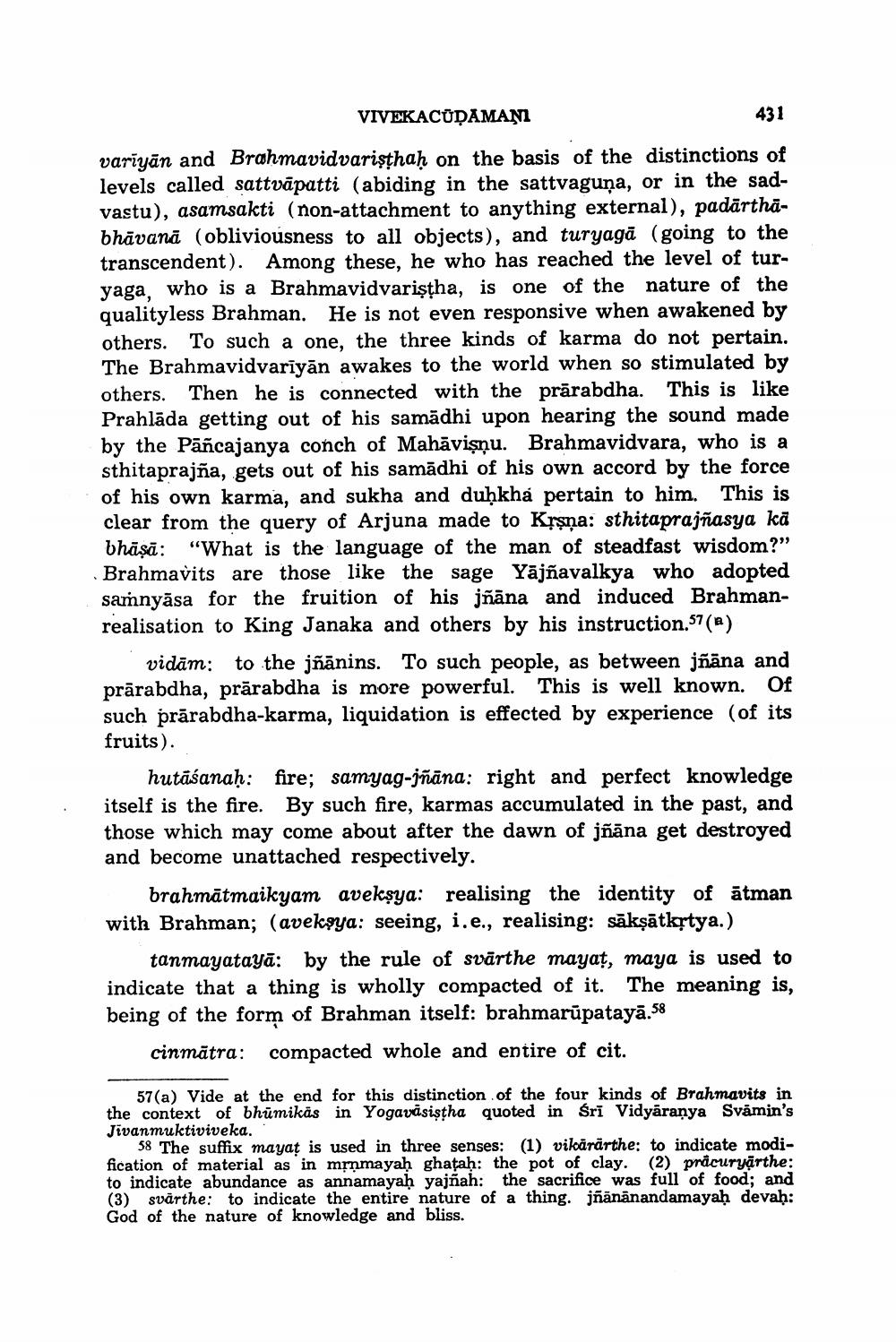________________
VIVEKACŪDAMAŅI
431
varīyān and Brahmavidvaristhah on the basis of the distinctions of levels called sattvāpatti (abiding in the sattvaguņa, or in the sadvastu), asamsakti (non-attachment to anything external), padārthābhāvanā (obliviousness to all objects), and turyagā (going to the transcendent). Among these, he who has reached the level of turyaga, who is a Brahmavidvaristha, is one of the nature of the qualityless Brahman. He is not even responsive when awakened by others. To such a one, the three kinds of karma do not pertain. The Brahmavidvarīyān awakes to the world when so stimulated by others. Then he is connected with the prärabdha. This is like Prahlāda getting out of his samadhi upon hearing the sound made by the Pāñcajanya conch of Mahāvişņu. Brahmavidvara, who is a sthitaprajña, gets out of his samādhi of his own accord by the force of his own karma, and sukha and duḥkha pertain to him. This is clear from the query of Arjuna made to Krsna: sthitaprajñasya kā bhāsā: "What is the language of the man of steadfast wisdom?" Brahmavits are those like the sage Yājñavalkya who adopted samnyāsa for the fruition of his jñāna and induced Brahmanrealisation to King Janaka and others by his instruction.57(a)
vidām: to the jñānins. To such people, as between jñāna and prārabdha, prārabdha is more powerful. This is well known. Of such prārabdha-karma, liquidation is effected by experience (of its fruits).
hutāśanaḥ: fire; samyag-jñāna: right and perfect knowledge itself is the fire. By such fire, karmas accumulated in the past, and those which may come about after the dawn of jñāna get destroyed and become unattached respectively.
brahmätmaikyam avekşya: realising the identity of atman with Brahman; (avekşya: seeing, i.e., realising: sākşātkrtya.)
tanmayatayā: by the rule of svārthe mayat, maya is used to indicate that a thing is wholly compacted of it. The meaning is, being of the form of Brahman itself: brahmarüpatayā.58
cinmātra: compacted whole and entire of cit.
57(a) Vide at the end for this distinction of the four kinds of Brahmavits in the context of bhūmikas in Yogavāsistha quoted in Śrī Vidyaranya Svāmin's Jivanmuktiviveka.
58 The suffix mayat is used in three senses: (1) vikārārthe: to indicate modification of material as in mrņmayaḥ ghataḥ: the pot of clay. (2) pracuryarthe: to indicate abundance as annamayaḥ yajñah: the sacrifice was full of food; and (3) svārthe: to indicate the entire nature of a thing. jñānānandamayah devah: God of the nature of knowledge and bliss.




